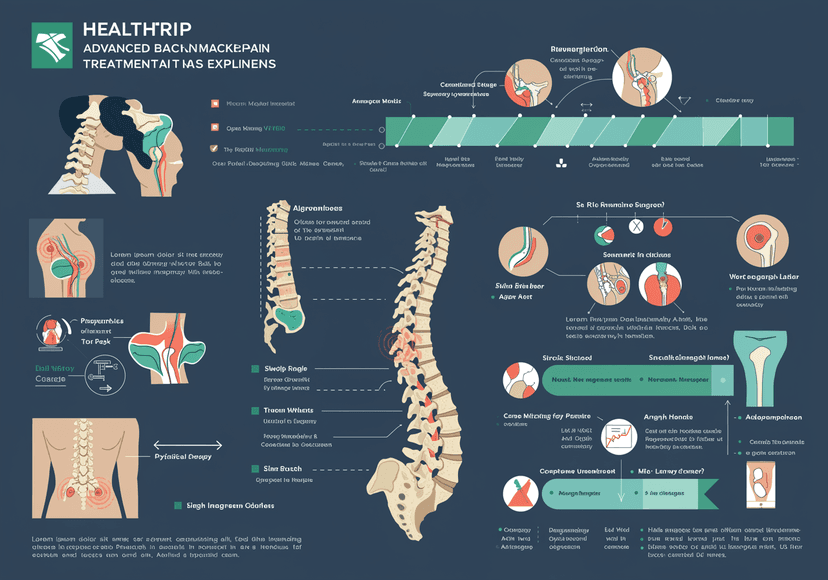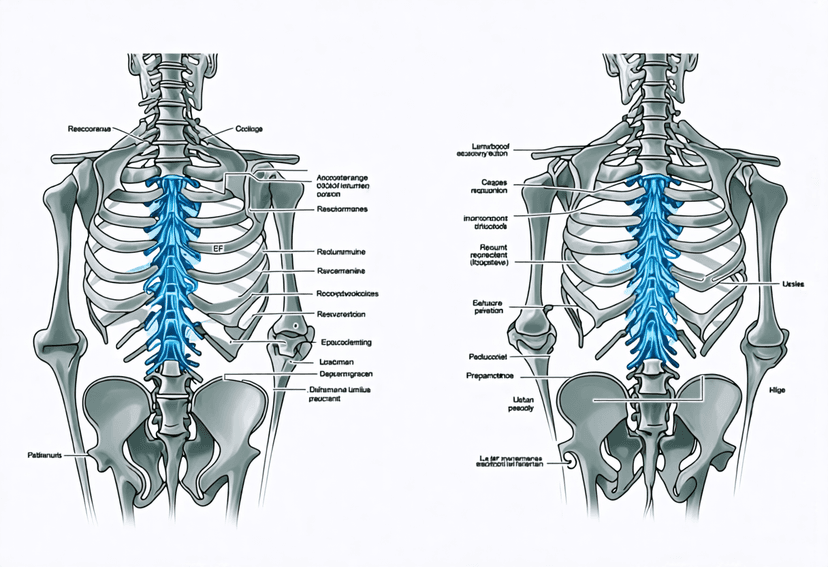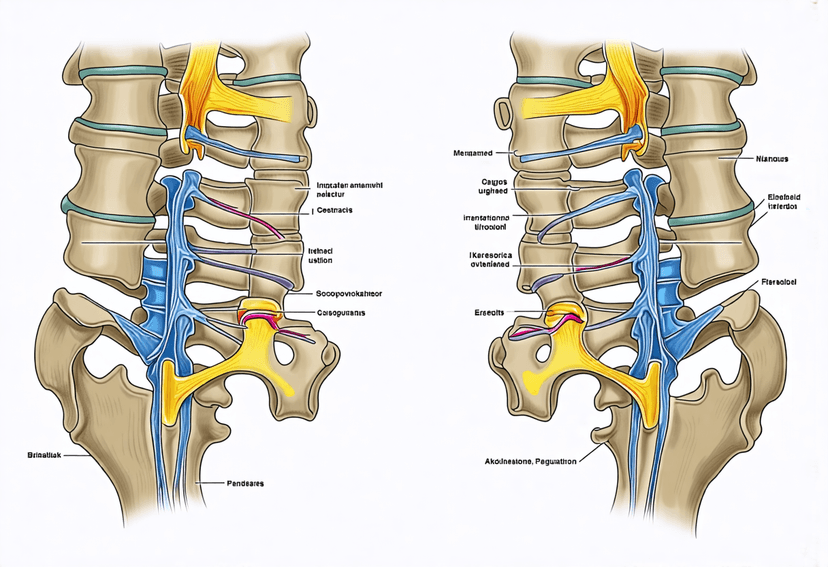
Ergonomics for Spinal Health in the UAE
06 Nov, 2023
 Healthtrip
HealthtripIn an age where more individuals in the UAE are working from home, the importance of ergonomics cannot be overstated. Our daily lives have become increasingly intertwined with technology, whether for work or leisure, and this has given rise to a host of musculoskeletal issues, particularly spinal problems. By understanding the principles of ergonomics and implementing them both at home and in the workplace, we can effectively prevent and alleviate spinal issues. This blog explores the significance of ergonomics in the United Arab Emirates (UAE) and provides valuable insights into maintaining a healthy spine.
What is Ergonomics?
Ergonomics, or human factors engineering, is the science of designing and arranging objects and environments to fit the human body's capabilities and limitations. It aims to optimize efficiency, comfort, and safety by minimizing stress on the body. Proper ergonomics is crucial to prevent spinal issues, as prolonged periods of poor posture or incorrect body mechanics can lead to chronic pain and discomfort.
Most popular procedures in India
The UAE's Growing Need for Ergonomics
As the UAE continues to evolve as a global hub for business and technology, more people find themselves working in office spaces or from home. The proliferation of technology has dramatically increased the amount of time spent sitting at desks, using computers, and interacting with screens. This shift in lifestyle and work habits has given rise to a significant increase in spinal problems and discomfort.
Ergonomics in the workplace is a vital component of ensuring employee well-being, enhancing productivity, and preventing work-related musculoskeletal disorders. In this section, we will delve deeper into the specific aspects of ergonomics at work and how they can be effectively implemented.
Wellness Treatments
Give yourself the time to relax
Lowest Prices Guaranteed!

Lowest Prices Guaranteed!
The Importance of Ergonomics in the Workplace
Ergonomics in the workplace is not just about having fancy chairs and adjustable desks; it's about creating an environment that aligns with the natural capabilities of the human body. Here are some key reasons why ergonomics is essential in the work setting:
- Improved Comfort: Ergonomically designed workstations and tools minimize discomfort and pain, allowing employees to focus on their tasks rather than their physical discomfort.
- Enhanced Productivity: When employees are comfortable and free from pain, they can maintain higher levels of concentration and productivity. This, in turn, benefits the employer.
- Injury Prevention: Ergonomics reduces the risk of injuries and musculoskeletal disorders, saving both employees and employers from the physical and financial costs of workplace injuries.
- Employee Engagement: A workspace that prioritizes ergonomics demonstrates care for employee well-being. This can boost morale, engagement, and job satisfaction.
Key Elements of Ergonomics in the Workplace
To create an ergonomically sound workplace, several key elements must be considered and implemented:
1. Adjustable Workstations
Adjustable workstations are the foundation of ergonomic design. These allow employees to tailor their workspaces to their individual needs, promoting proper posture and reducing the risk of discomfort.
2. Ergonomic Chairs
Ergonomic chairs provide proper lumbar support, cushioning, and adjustability. They ensure that employees maintain a healthy seated position and reduce the risk of back pain.
3. Monitor Placement
Computer monitor placement is crucial. Monitors should be positioned at eye level and an arm's length away to maintain an upright posture, preventing neck and upper back strain.
4. Keyboard and Mouse Setup
Proper positioning of the keyboard and mouse is essential to prevent wrist and arm strain. Consider using keyboard trays that allow for adjustable height and tilt.
5. Lighting
Appropriate lighting is crucial in preventing eye strain and maintaining overall well-being. Avoid glare on computer screens and ensure that the workspace is well-lit.
6. Organization
An organized workspace reduces clutter and the need for awkward postures or movements. Everything an employee needs should be within easy reach.
7. Regular Breaks
Encourage employees to take regular breaks to stand, stretch, and walk around. Breaks can alleviate the negative impact of prolonged sitting and re-energize employees.
8. Training and Education
Provide training and education on ergonomics to all employees. Ensure that they understand the importance of proper ergonomics and how to make adjustments to their workstations.
Ergonomics at Home:
In today's changing work landscape, many individuals in the UAE are adopting remote work setups. However, working from home presents its own set of challenges, especially when it comes to maintaining good spinal health. Ergonomics at home is the key to preventing musculoskeletal issues and ensuring a comfortable and productive work environment. This section will delve into the significance of ergonomics at home and provide valuable insights on how to set up an ergonomic home workspace.
Why Ergonomics at Home Matters?
Ergonomics at home is not merely a matter of convenience; it is a crucial aspect of preserving your overall health and well-being. As remote work continues to gain popularity, especially in the UAE, where the line between work and home life can easily blur, creating an ergonomic home office is essential. Neglecting ergonomics can lead to a range of health issues, with spinal problems being among the most common.
Key Elements of Ergonomics at Home
To create a home office environment that supports good posture, prevents spinal issues, and enhances productivity, you should consider several fundamental elements:
1. Dedicated Workspace
Designate a specific area within your home for work. This separation is essential to create a mental boundary between your professional and personal life. It helps you maintain focus and minimize distractions.
2. Adjustable Workstation
Invest in an adjustable desk that allows you to switch between sitting and standing positions. The ability to change your posture throughout the day is crucial in reducing the strain on your spine.
3. Ergonomic Chair
Choose an ergonomic chair that provides lumbar support and can be adjusted to fit your body's unique requirements. A comfortable chair encourages proper posture and minimizes the risk of back pain.
4. Monitor Placement
Position your computer monitor or laptop screen at eye level. This setup promotes an upright posture and minimizes neck and upper back strain.
5. Keyboard and Mouse Setup
Ensure that your keyboard and mouse are at a comfortable height and distance. Consider using a keyboard tray or ergonomic keyboard and mouse to prevent wrist and arm strain.
6. Proper Lighting
Create a well-lit workspace to reduce eye strain. Avoid glare on your computer screen, which can lead to discomfort and decreased productivity.
7. Organization
Keep your workspace organized and clutter-free, with all essential items within easy reach. Reducing clutter minimizes the need for awkward postures or movements.
8. Regular Breaks
Incorporate short breaks into your workday to stand, stretch, and move around. These breaks are essential to reduce the negative effects of prolonged sitting and promote circulation.
9. Personalization
Customize your workspace to fit your body's unique requirements. Everyone is different, and an ergonomically sound home office should be tailored to your specific needs.
Family Considerations
If multiple family members share the same workspace, it's essential to adapt the area to each person's ergonomic requirements. Ensure that each individual's workspace is tailored to their needs, allowing them to work comfortably and efficiently.
Daily Habits for Spinal Health
Maintaining a healthy spine is not solely dependent on ergonomic work setups and home office designs. It requires cultivating daily habits that support spinal health. In a rapidly evolving work environment, such as the UAE, where technological advancements and sedentary lifestyles are prevalent, these habits play a crucial role in preventing spinal issues. Here are some daily practices that can significantly contribute to spinal health:
1. Proper Posture Awareness
- Ergonomic Practices: Whether at work or home, always be mindful of your posture. Sit or stand with your back straight, shoulders relaxed, and feet flat on the floor. Avoid slouching or leaning forward for extended periods.
- Desk Arrangement: Regularly check your workspace to ensure it promotes good posture. Adjust your chair, monitor, and keyboard as needed to maintain ergonomic principles.
2. Stretching and Exercise
- Stretch Breaks: Incorporate regular stretching breaks into your daily routine. Simple stretches like neck rotations, shoulder rolls, and spine twists can help relieve tension and maintain flexibility.
- Core Strengthening: Engage in exercises that strengthen your core muscles, such as planks, bridges, and leg raises. A strong core provides better support for your spine.
3. Stay Hydrated
- Adequate Water Intake: Drinking enough water is crucial for overall health, including spinal health. Proper hydration helps maintain the fluid balance in the intervertebral discs, reducing the risk of disc degeneration.
4. Proper Lifting Techniques
- Use Your Legs: When lifting heavy objects, bend at your knees and hips, not your back. Engage your leg muscles to do the heavy lifting, reducing the strain on your spine.
5. Ergonomic Sleep Habits
- Mattress and Pillow: Invest in a comfortable mattress and pillows that provide proper support for your spine. A good night's sleep is essential for spinal health.
- Sleep Position: Sleeping on your back with a pillow under your knees or on your side with a pillow between your legs can help maintain a neutral spine position during sleep.
6. Stress Management
- Mindfulness and Relaxation: High stress levels can lead to muscle tension and discomfort. Engage in stress management techniques like meditation, deep breathing, and relaxation exercises to reduce the impact of stress on your spine.
7. Regular Check-Ups
- Healthcare Professionals: Schedule regular check-ups with healthcare professionals, including chiropractors, physical therapists, and orthopedic specialists. Early detection and intervention can prevent minor issues from becoming chronic.
8. Ergonomics Beyond Work
- Maintain Ergonomic Principles: Apply ergonomic principles beyond your work environment. When watching TV, reading, or using handheld devices, ensure that you maintain good posture and provide proper support to your spine.
The Future of Ergonomics in the UAE
Ergonomics in the United Arab Emirates (UAE) is at the cusp of significant transformation, driven by a rapidly evolving work landscape and a growing awareness of the importance of well-being. As the UAE continues to advance as a global hub for business and technology, the future of ergonomics holds exciting possibilities. In this section, we will explore the emerging trends and potential developments that could shape the future of ergonomics in the UAE.
1. Integrated Ergonomics in Design and Architecture
In the UAE, urban development and construction are booming. In the future, we can expect to see a greater emphasis on integrating ergonomic principles into the design and architecture of office spaces, public places, and residential buildings. This will promote comfort and well-being from the ground up, providing ergonomic solutions that seamlessly blend with the environment.
2. Technological Advancements in Ergonomics
As the UAE embraces technology, we can anticipate the development of innovative solutions that leverage artificial intelligence, sensors, and data analytics to enhance ergonomic practices. Smart workstations and wearable devices that provide real-time feedback on posture and movement could become more commonplace.
3. Customized Ergonomic Solutions
The future of ergonomics will likely prioritize individualization. Tailored ergonomic solutions that consider a person's unique physical attributes and work requirements will become increasingly prevalent. Whether it's custom-designed office furniture or personalized ergonomic assessments, the UAE will see a shift toward catering to the specific needs of individuals.
4. Ergonomics in Remote Work
Remote work is on the rise, and the UAE is no exception. In the future, ergonomics at home will receive more attention. Employers may provide home office stipends, and individuals will invest in creating ergonomic home workspaces to ensure comfort and productivity.
5. Government Initiatives and Regulations
Government bodies in the UAE may implement regulations and guidelines for ergonomic standards in workplaces, including home offices. This proactive approach will help ensure that all residents have access to ergonomically sound workspaces, regardless of their work setting.
6. Emphasis on Health and Wellness Programs
Employers and organizations in the UAE are expected to place a greater emphasis on health and wellness programs that incorporate ergonomics. These programs will not only focus on physical health but also on mental well-being, recognizing the holistic nature of employee welfare.
7. Education and Training
As ergonomics gains prominence, education and training in this field will become more accessible. Employees, employers, and healthcare professionals will receive training to understand and implement ergonomic practices effectively.
8. Research and Development
The UAE's commitment to innovation and advancement extends to ergonomics. Investment in research and development will lead to the creation of cutting-edge ergonomic products, designs, and solutions that address the unique challenges posed by modern work environments.
Conclusion
Ergonomics is not just about comfort but is fundamentally connected to our overall health. By adopting ergonomic principles both at home and in the workplace, residents of the UAE can significantly reduce the risk of spinal problems. With the prevalence of technology and remote work, embracing ergonomics is not only a matter of comfort but also a necessity for a healthy, pain-free life. It's time to prioritize the well-being of our spine and embrace ergonomics as an essential aspect of our daily routine in the UAE. Your spine will thank you for it.
Related Blogs

Healthtrip: Advanced Back Pain Treatments Explained
Healthtrip

Corrective Osteotomy: A Path to Pain-Free Living
Discover how corrective osteotomy surgery can help you overcome chronic

Body Re-Alignment for Chronic Pain Relief
Discover the benefits of body realignment for chronic pain relief.

The Art of Body Re-Alignment for a Pain-Free Life
Learn how body realignment can help you live a pain-free

Recovery After Transforaminal Lumbar Interbody Fusion (TLIF)
Learn about the recovery process after Transforaminal Lumbar Interbody Fusion

Understanding Transforaminal Lumbar Interbody Fusion (TLIF)
Learn about the Transforaminal Lumbar Interbody Fusion procedure, its benefits,










